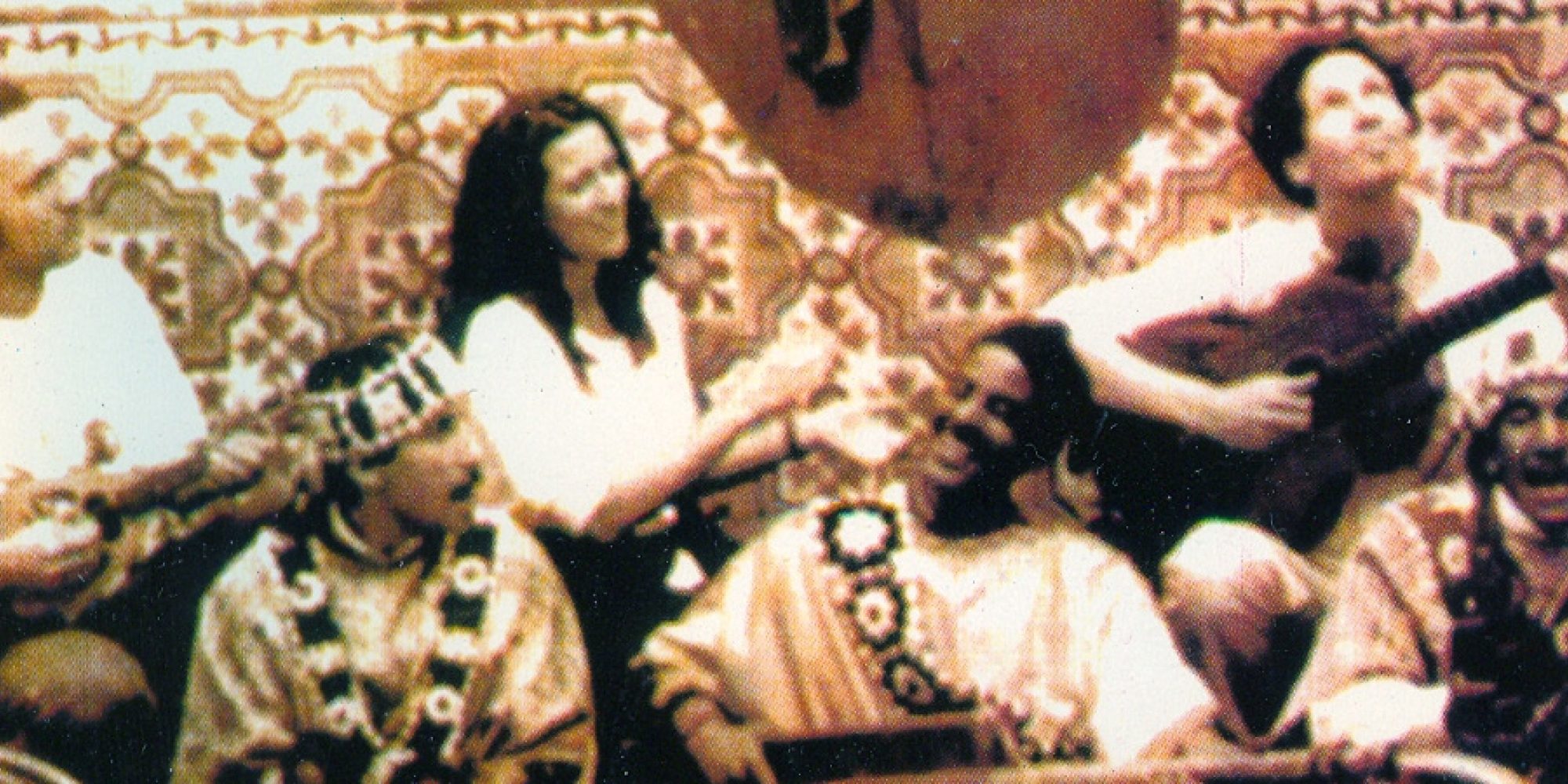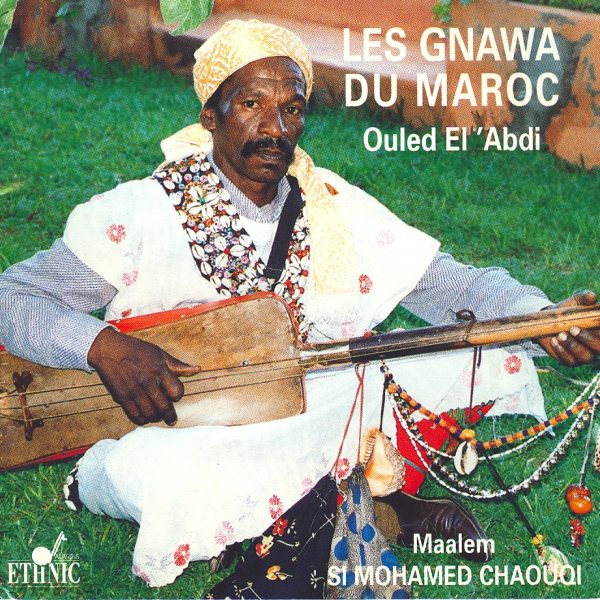The Gnawa musical healers of Morocco are a perennial fascination within the broad tableau of the Afropop story. They bring together potent themes—slavery and its legacy of displacement and diaspora, music that induces trance and even spirit possession, and the paradox of ancient African realities finding their place in the contemporary world. The music is instantly recognizable and surprisingly durable. More than 20 years after I first heard the boom and thwack of a well-played sinter (3-stringed, pentatonic lute—also guimbri or hajhuj) and the brittle, metallic sputter of the qraqab (iron castanets), the sound still sends a certain chill up my spine each time I hear it.
Creating the Afropop Worldwide program Traveling Spirit Masters: The Gnawa of Morocco has provided an opportunity to revisit our past coverage of the Gnawa, and to go deeper. This program focuses on the core ritual of Gnawa practice, the all-night lila, a healing ceremony involving spirit possession. It relies primarily on Deborah Kapchan’s provocative work on possession and trance, and on Tim Abdellah Fuson’s analysis of the music in the lila ceremony. Moroccan historian Mohammed Ennaji, a specialist on North African slavery, contributes crucial background.
This feature pulls together excerpts from these two interviews for the Traveling Spirit Masters program.
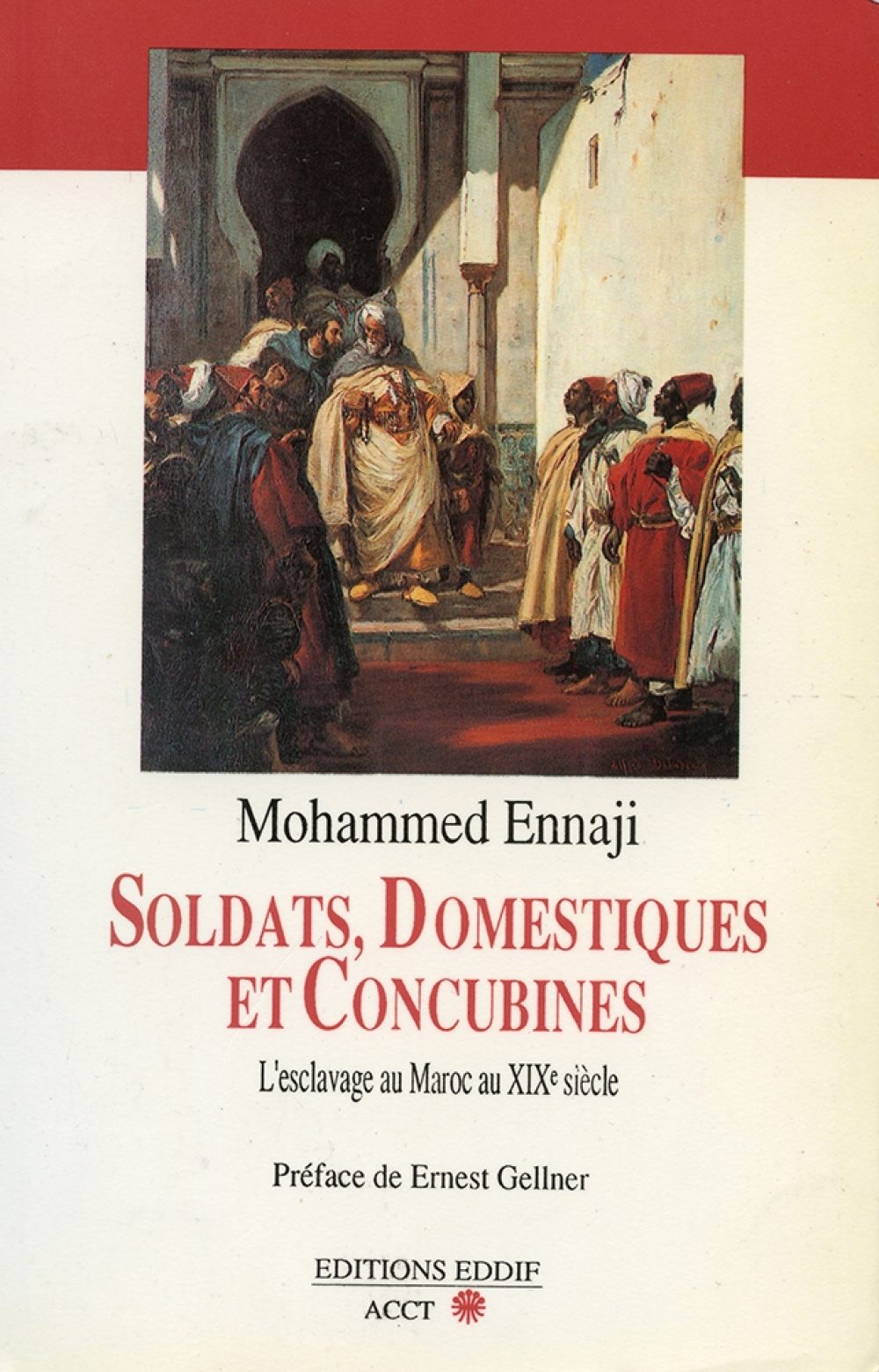
We spoke with historian Mohammed Ennaji from his office in Rabat, Morocco. We were interested in better understanding the back story. The Gnawa’s ancestors were slaves brought to Morocco from West Africa, and we asked Professor Ennaji to tell us more about that history. Here are excepts from his remarks.
The origin of the Gnawa. Even the word itself, “Gnawa,” probably means Guinea. The word itself shows the origins of these Blacks who came across the Sahara from Morocco. These people didn't only come from Guinea; they came from West Africa, from Senegal, Mali, Guinea, Cote d'Ivoire, Burkina Faso. The slave trade is very old. It apparently began with the Muslim period in Morocco, but even then, the commerce was developed. It was generally going on throughout the Arab world. The presence of Blacks goes way, way back in Morocco, to between the 8th and 9th centuries when Arabs arrived and began to form a state.
Throughout the Muslim empire it was the formation of the state, the formation of big families, the formation of an urban bourgeoisie, and a dominant rural class that created the demand for slaves. By the Middle Ages, we find Black slaves in the Army. The best known period begins with the Saadians in the 16th century. This is where we find the most testimony concerning Black slaves in Morocco. This dynasty began in the 16th century, and it was most important because you had to re-conquest of the Sudan (Timbuktu), and the formation of a professional army under the Sultan Moulay Ismael. These were the Alawids. I think that after this period, Blacks were more present not only in social life but in the political life of Morocco.
Ever since the Saadian period and the formation of the slave army of Boukhari, of Moulay Ismael, there has been a strong concentration of Blacks, of former slaves. This community of Blacks existed in the Army, existed in various villages in the south of Morocco, and created a culture and an identity for that community.
How slavery ended: It continued until the 20th century. Only with the arrival of the French protectorate at the beginning of the 20th century was slavery forbidden. In fact, the protectorate did not forbid slavery; it forbade doing publiccommerce in slaves. It forbadE the market. But commerce in slaves continued into the next century. It continued publicly into the 1930s in the south of Morocco, in the Souss (Berber region in the south) and the Sahara. Even during the Second World War, slaves were still arriving across the Sahara, although in less quantity. So during this period when the public commerce was forbidden, it became harder and harder to bring slaves, a new phenomenon began to develop—the kidnapping of young Blacks in the south of Morocco, young boys and girls, to sell in the markets of the cities, in response to the demand from the urban bourgeoisie.
The lives of slaves in Morocco: We know their lives through other sources. I wrote a book about this, but it is based on indirect testimony, from correspondences of the state, documents about the buying and selling of slaves, juridical documents, if there was a legal problem that was posed, such as after a slave escaped or had a child. We know that the lives of slaves were difficult. Conditions in Morocco were not easy, even for free people. But the lives of the slaves were very different if they lived with a rich family, or a middle-class family. It varied a lot. But I consider it a myth that slaves received good treatment in the Muslim world. A slave is a slave. He knows bad treatment. He lives in very difficult conditions. He has no stability in his family life. His children can be sold. He can be separated from his wife. The law permits these things. There are common elements to slavery all over the world.
One thing that I noticed is that you can very quickly start to talk about integration into Moroccan society. Very quickly they were speaking Berber or Arabic. That's a true sign of integration. This integration was facilitated by the fact that the Muslim religion was already there. Most of the slaves were already Muslims when they arrived, so this allowed for very strong integration. Culture, including music, came with them.
You know one of the differences between Morocco and America or other Western countries—and this is not only Morocco but other Arab countries—many free Moroccans, are not white. There are many Blacks among the noble class. The integration is much more rapid. At the same time, you'd have to say that the situation is much improved from the 19th century to the 20th century.
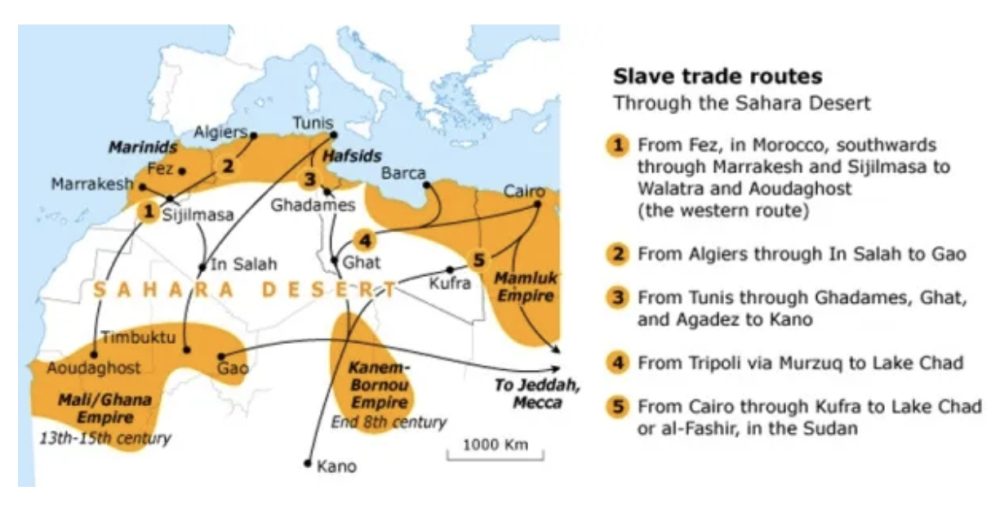
First record of the Gnawa in Morocco: For me, it is the documents and the testimony of the 19th century. I think this is a word that was mostly circulated in the popular milieu. For example, when they were doing the census of big families, like the governor’s family, they talked about the “gnawi” language. This was for the slaves who have just arrived and still speak their African language. It was a generic term, used for everybody. It may have existed before. I don't know. But at that point, we begin to see it in the testimony.
The Bambara connection: The Bambara represented a very important faction. There have not really been studies about that, but I think it is possible to study that question because I know, for example, that in the 19th century, there were lists that the state created for the Army with descriptions of the Blacks. Descriptions of their color and their characteristics, languages, were recorded, and I think it is possible through that to reconstruct the different percentages who arrived from different regions. But there really haven't been precise studies on this.
The Gnawa today: Today we talk about the Festival of the Gnawa. But you know that in the south of Morocco, especially in Idir, in Tiznit, in different regions, there are little parties organized by the Blacks every year. These are meetings of former slaves, free today. They come from Casablanca and other places. These are parties among themselves, and they call these “slave parties.” They come to sing songs to ask forgiveness, and these things pass among the population. It's not for the public. Because in the past, in Tashelhit the Blacks did not have their place in the big fair, the big pilgrimage for Sid Hamid Moussa, who unified all the tribes in the south of Morocco. Blacks could not produce their music there, and so they had their little parties to themselves. This is an old phenomenon, going back to the 19th century, but it never had the hubbub that you find today around the Gnawa. Today it is much more well known, and much more folkloric.
The effect of international fame on the Gnawa: That especially has deformed the music, and for one very simple reason. Now it is a product that is sold on the market. Today, Gnawa music is a profession. There's no more slavery anymore. Blacks are very well integrated into Moroccan society. Today there's a real professionalization, and the meaning of the words is not the same as before. They sell words in songs like merchandise, and the singing is no longer the same. Because before, they were slaves, at the very least disenfranchised. They sang their songs and asked for forgiveness from God. Today Gnawa songs do very well in the market. It completely changes the context of the songs. Before, the lilaswere about healing. Even the white population would call on the Gnawa as healers, not as a spectacle. Today there are spectacles. It's in fashion. We come to watch a ritual.
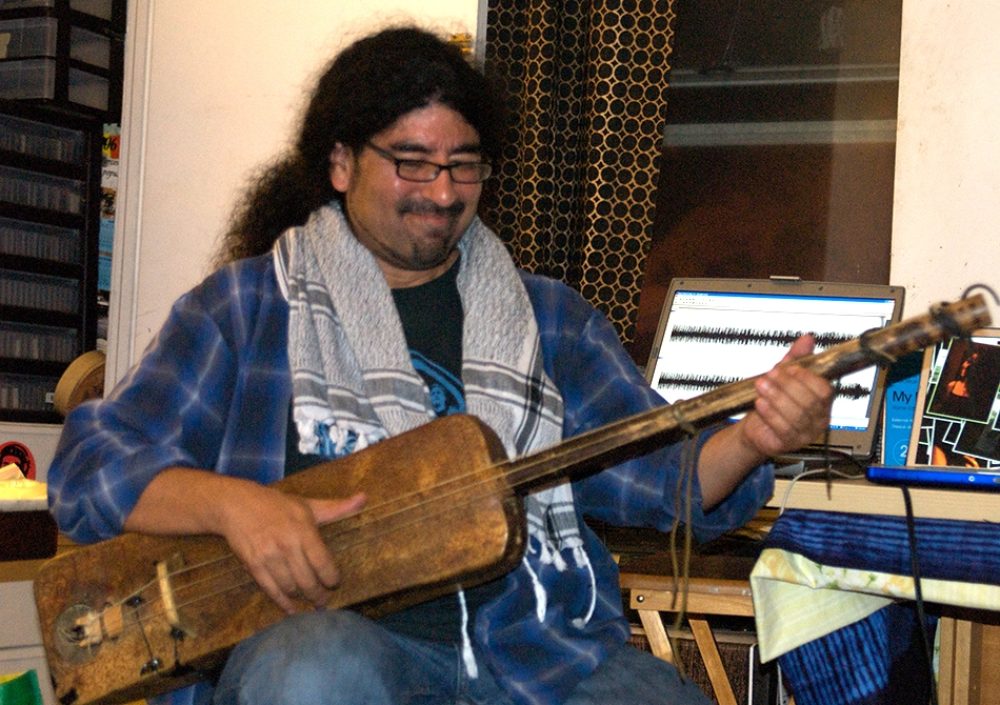
Tim Abdellah Fuson completed his PHD at UC Berkeley, including a dissertation on the songs in the lila ceremony. He travelled to Morrocco six times between 1992 and this 2009 interview, including an 18-month stay for his doctoral research.
The Gnawa musical repertoire: The bulk of the Gnawa repertoire comes out of the lila ceremony. It's about 180 songs altogether that are played on most occasions. There are some songs that have dropped out of the repertoire over the years. There are some songs that are rarely played, or are only played on special occasions, but there's a pretty standard group of songs that are usually performed in about the same order in any ceremony you go to. The traditions are different in different cities. So the way that the songs are played in Marrakesh is going to be a little different than the way they're played in and Essaouira or Tangier, or other places where you have Gnawa. But within a city is going to remain standard.
Within the Gnawa repertoire, there are two basic rhythmic patterns. One is a four-stroke pattern, where you have four strokes of the qraqaba for each beat. Then there is another one which has a three-stroke pattern. That can take a 2/4 or a 6/8 form. All of the songs of the lila repertoire are going to fall into one of those categories. Melodically, it's also pretty simple. It's a couple of pentatonic scales that are used. One would be [D E G A C] That's the first of the pentatonic scales. Or it could be [D E G A B]. Those are the basic nuts and bolts of the gnawa music vocabulary
Musical notes on the lila ceremony.: There are a few different reasons that a lila could take place. There might be a person who is suffering from some sort of affliction, maybe either mental distress or emotional distress, or maybe a physical paralysis. Some sort of affliction that is suspected to have been caused by one of the Gnawa spirits. In that case, a lila could be undertaken as a divination, as a way to find out which of those Gnawa spirits was responsible. In other cases, people already know that they have this relationship of one spirit or another, and to those folks may have to annually sponsor a ceremony. In other cases, a lila could be sponsored to ward off possible problems that might come in the future, or to give thanks for bad things not happening in the past. So there are several reasons for which a ceremony might be undertaken.
The Gnawa call the possessing spirits the mluk, which literally means “the owners.” The mluk belong to a category of beings called the jinn, or the jnun, in Moroccan Arabic. The jinn are beings of smokeless fire whose existence is confirmed in the Koran. Now not all jnun belong to this group of Gnawa spirits that tends to possess people. Most of them keep to themselves most of the time. But there is a certain group among them that enter into these relationships with humans.
During the dbiha, the ritual sacrifice, there is one particular, very important suite of songs that are played. It's called the Ftih ar Rahba, which means “the opening of the space.” Now you only hear this week at very high points in the ritual ceremony. It serves to call all of the spirits down. As opposed to other songs, which only address Sidi Musa or Balaiji, or one particular spirit. This suite calls all the spirits to be present. So at the moment that the blood is spilled, they are all being attractive, all of the spirits are being attracted by this particular suite of songs.
The fraja, the entertainment section, consists of a series of songs that are accompanied by dances performed by members of the hired musical ensemble. So this contrasts with the later sections where guests or anybody might possibly fall into trance. This is a display for an audience. It is very entertaining, the dances are wonderful. Gnawa specifically call it entertainment. They sort of downplay it a little bit, but I find that the content of the lyrics of the songs is very deep. It's in the songs of the fraja that the Gnawa really sing about their African origins, about the experience of slavery, of being uprooted and feeling like strangers in another land. There are a number of songs that deal with these sorts of things. Probably the most famous one would be “Khali Mbara Meskin” where they sing, “The master is eating meat, and the mistress is eating meat, and poor Khali Mbara, Uncle Mbara, who is sort of the archetypal domestic slave, is sitting in the kitchen gnawing on a bone."
The Gnawa call these processor spirits the mluk, which literally means “the owners.” The mluk belong to a category of beings called the jinn, or the jnun, in Moroccan Arabic. The jinn are beings of smokeless fire whose existence is confirmed in the Koran. Now not all jnun belong to this group of Gnawa spirits that tends to possess people. Most of them keep to themselves most of the time. But there is a certain group won them that enter into these relationships with humans.
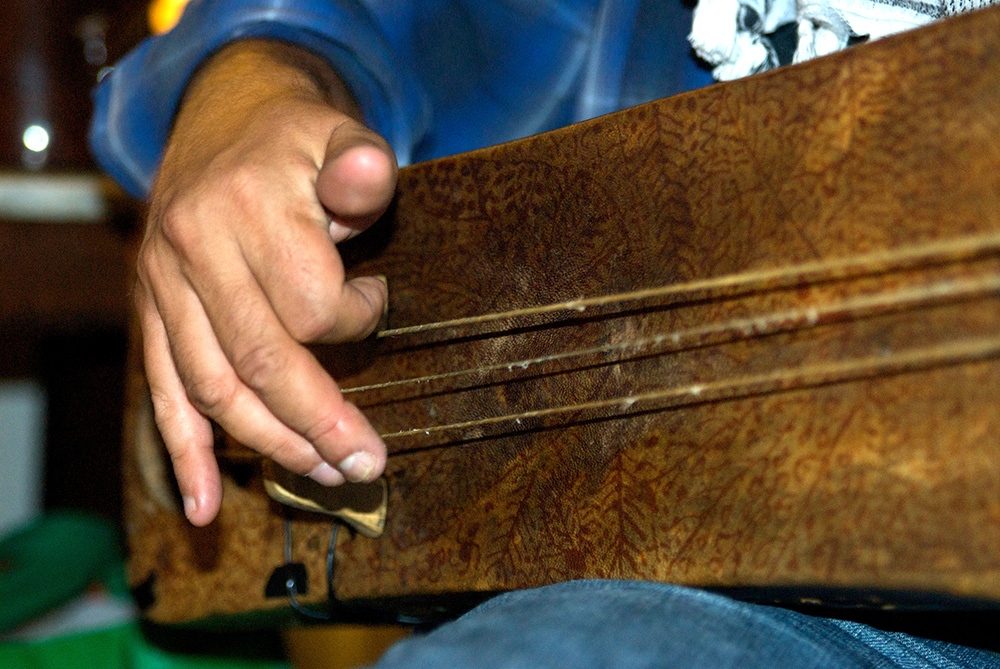
When possession happens…: What is the exact trigger for a possession?. It's hard to say. Sometimes it is hearing the opening notes of one particular song. For those who attend lilas a lot, they know what order the songs are coming in, so they can prepare. They know that the red spirits are right around the corner, so they sort of prepare themselves for that. For others, who are not familiar with the unfolding of the songs, they might get caught off guard. Then, all of a sudden, boom! They are breathing the red incense, and they are seeing the red-colored scarves and robes around, and are hearing songs for Sidi Hamou. It can be really overpowering.
Once there are people on the floor, you may have five or six people in trance. The m’allem (master) has to sort of deal with all of them, make sure they're all taken care of musically. Probably, the important thing to note here is that when a trancer finishes their trance, it's done in a one-on-one dialogue between a single transer and the m’allem playing the guimbri. So even though there may be five or six people in trance at any moment, only one of them can be getting the complete attention of the guimbri player at any time. So whoever sort of makes it to the front of the floor first and claims that space is the one who'll get the attention first from the m’allem. At the same time, he has to be able to play to all of them. He has to know how to balance the needs of a number of different trancers at any given time.
A Gnawa song comes in three sections. There is an opening section where the guimbri announces the opening phrase of the song. Then you come to the singing, and there is back and forth, call and response singing. Now the singing can go on for as long as it takes for people to get up on their feet. The lyrics are evocative. They add to that mood that is also present with the colors and the smells, and everything. Here in the singing, you get descriptions of who these spirits are, and some of their characteristics. So it's very emotional and evocative. At the same time, the trancer really wants to hear the guimnbri. Ultimately, it's all about the sound of the guimbri. So the singing is beautiful, it's evocative, and yet it's really there to push the trancers towards that moment where they can have a conversation with the guimbri player.
Finally, when the singers see that people are kind of up on their feet, they'll stop the singing and let the guimbri take over. So at this point, it's just guimbri and the qraqab playing percussion, keeping rhythm. So then, the guimbri player can work with one trancer. So, say in a song like “El Baniya” there are a few set phrases for the song—maybe 4, 5, 6 different phrases that he can use. It’s not a large amount of material, but there are a lot of different ways he can vary when he plays.
A guimbri player starts out with phrase A. Then he can repeat it, he can vary it, and eventually, it gives way to phrase B, which he can also repeat, before going on to phrase C, and then on to phrase D. Then there's this little groove-maker phrase called the mouima, which can get repeated indefinitely. Sometimes a trancer really wants to hear the mouima. Sometimes they really want to hear the punchy phrases of the guimbri’s main statement.
So within these sort of structural constraints, a guimbri player has a lot of options on how to communicate with the trancer. This is where the extra musical knowledge of the m’allem comes in. So he has to know not only the techniques to manipulate the sound, but he also has to know how to read a trancer. Yes to look at the trancer's condition and see whether they've had enough, whether they need more, whether he needs to delay the gratification of their expectations, or whether he can give them more of what they're asking for. These are some of the techniques that a guimbri player uses.
From what I have seen, it looks like the desired shape of the communication between the guimbri player and the trancer is for the trancer to eventually step forward and start demanding of the guimbri player certain phrases. So a really good trancer will ultimately indicate in gesture that she wants him to move on to phrase C or she wants him to return to the mouima. Then the guimbri player tasks the trancer, saying, “Okay, do you really want me to give you that phrase? I'm going to delay it, and see if you can deal with me delaying it. And then maybe I'll think about giving you that phrase."
Tour Kelilah: The song “Tour Kelilah” seems to have become quite popular among Gnawa fans outside of Morocco, perhaps because of its inclusion on the Night Spirit Masters CD, one of the early compact discs of Gnawa music. A curious thing about that song, though, is that it is rarely played during ritual ceremonies. When it is played, it comes at a particular moment during the fraja. But at all of the lilas that I attended in Marrakesh, they might have gotten to that song on one occasion. Perhaps one reason for this is that there is a very specialized dance that goes along with that song that has something to do with knives. I can't tell you exactly what is done with those knives, but from what I gather, it's a pretty specialized dance requires a lot of skill to perform well. So perhaps that's one reason why it is not seen in ritual performances that often.
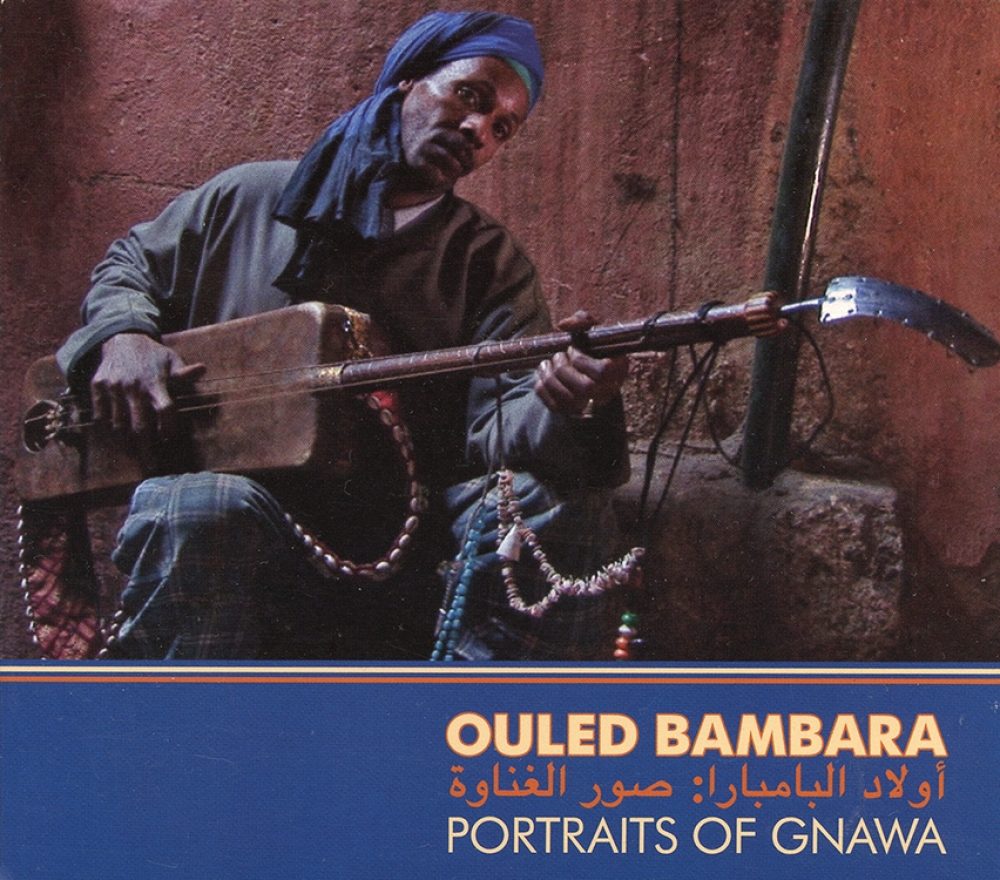
Ouled Bambara: Portraits of Gnawa
This excellent CD/DVD package features recordings and filmed interviews and performances with renowned Gnawa musicians, including Abdelkbir Marchane & Ahmed Baqbou, Brahim Belkani, Hassan Zougari, and Mohamed Hamada. Listen here.
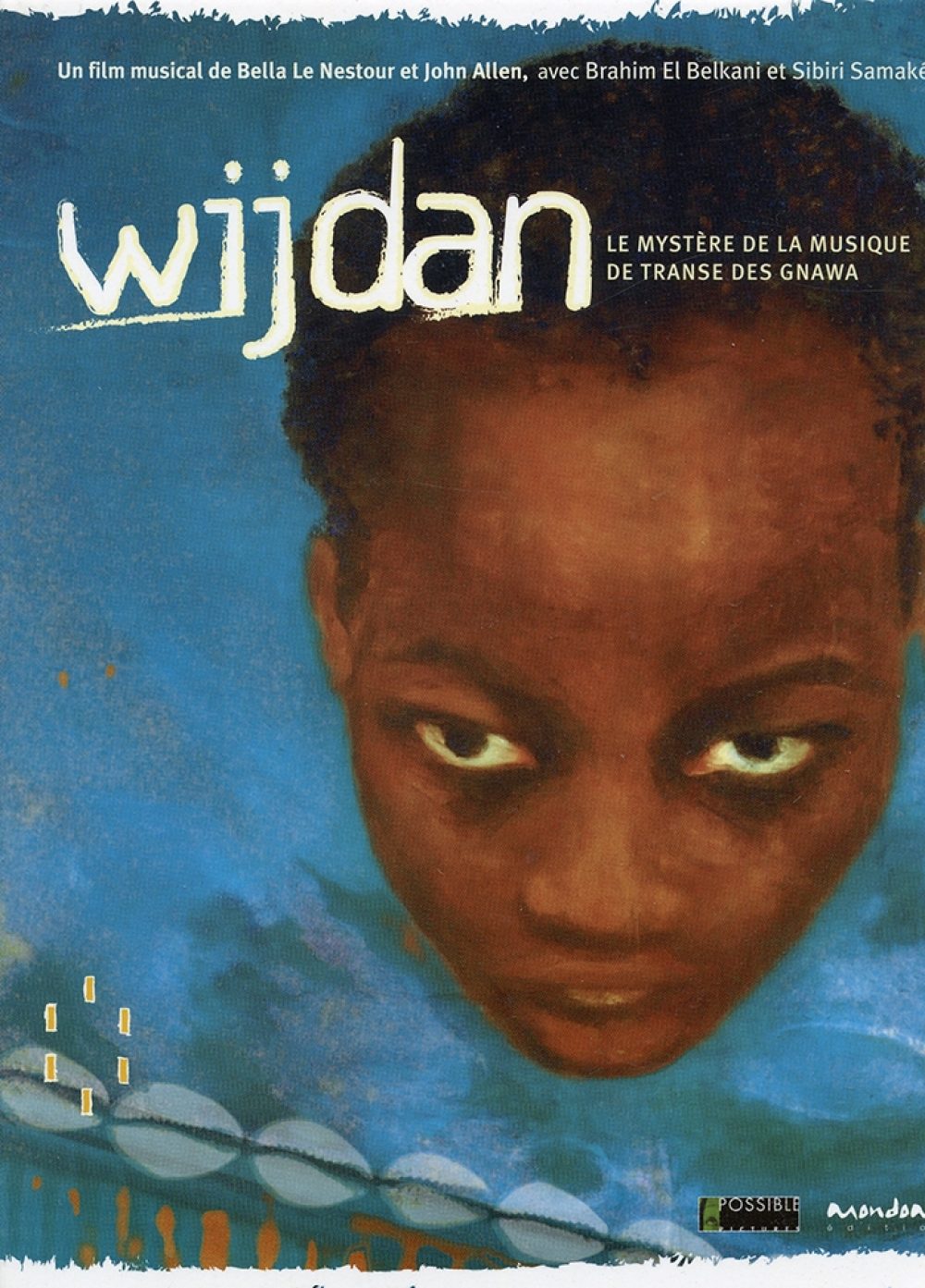
Wijdan, le mystere de la musique de transe
This fascinating 52-minute film explores the Gnawa-Bambara connection by bringing together Brahim El Belkani (Moroccan Gnawa) and Sibiri Samaké (Malian Bambara hunter’s musician) and their cohorts, culminating in a concert in France.
Essaouira Gnawa Festival official website








